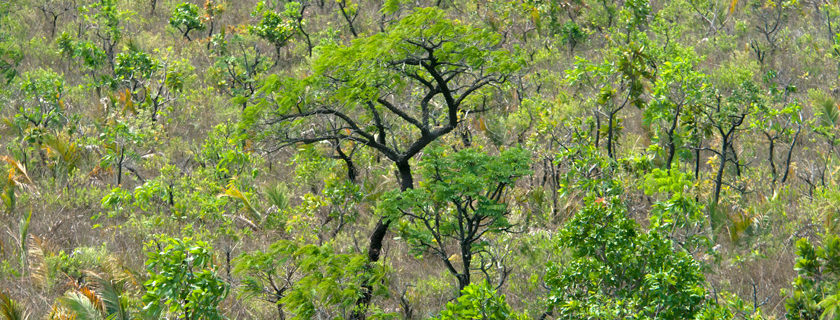Cerrado: more threatened than the Amazon
There is an important natural region in Brazil, where the largest national rivers have their water springs, and that has been strongly deforested. If you guessed Amazon, guess again. It’s the cerrado. If it’s the first time you hear about this place, you’re not alone: in fact, although the cerrado is more threatened than the Amazon, few people have actually heard about it.
The cerrado covers one fifth of the Brazil, looks like a savanna with denser vegetation (cerrado actually means “very dense”), with bushes and small trees growing on a nutrient-poor soil, but with high levels of iron and aluminium. The vegetation in the cerrado is able to collect and store the water that pours in, during only a few months, keeping the springs alive all year round – even when it doesn’t rain. In fact, the springs to three of the major rivers in South America are in the cerrado: river Amazon and Tocantins, river Sao Francisco and river Prata.
A lot is still yet to be understood about the cerrado, but scientists already know it is a hotspot of biodiversity: it is home to thousands of rare plant species and hundreds of animal species threatened with extinction like the famous jaguar, the giant anteater, the giant armadillo and the maned wolf.
Although being a vital biome to the country, estimates indicate that about 50% of the original cerrado has already been deforested (against 18% of the Amazon forest).
A recent study on “Global Change Biology” has proved the existence of a surprising self-perpetuating process: deforestation in the cerrado might be one of the main causes of the recent drought (severe decrease of rainfall) that has been affecting an important part of the country. And this is due to an important decrease of evapo-transpiration because there are fewer trees in the cerrado. This recent long lasting drought has been severely affecting national large-scale agriculture, which is ironically the main cause for the cerrado deforestation. Consequences are now reaching the river Amazon whose outflow levels are strongly dependent on the seasonal rainfall over the cerrado.
Nemus is now finishing the São Francisco River Management Plan (SFRMP) 2016-2025, whose half of the river basin should be occupied by cerrado, but which has been progressively replaced by large-scale agriculture and other human activities. This cycle can only be stopped by putting in place an integrated management and action plan that will assure the sustainable use of land and water, through a wise definition of priorities, aiming to cope needs with availabilities. The SFRMP is actually a wide range action plan that should assure the sustainability of this river basin that stretches along 650,000 sq km and is home to 15 million people.
Original article from Washington Post in here.

